The Leper Colony that never was.
A photo essay of El Sanatoria De Abades... because you have to see it to believe it.
This is Essay #146
NOTE! There are a lot of photos, so please open in the App!
America is collapsing… and I just can’t write about it. I’m too emotional as I realize just how despicable so many of my fellow Americans are. Not you. You’re here. And for that, I thank you! 💙 I’ve been working on the photos I took of one of the most astonishing places I’ve ever seen… and I have to share them with you!
To describe it as otherworldly just doesn’t cut it. When you walk through these grounds, the abandoned buildings give an eerie sense of a history that never happened. Back in May, my travel guru brought me to this place. And what a place it is. THIS is why we travel!
In Tenerife (the largest of the Canary Islands in Spain), leprosy was once a big problem. The disease led to the construction of a village of sorts in 1943, post-Spanish Civil War. This was during the time of General Francisco Franco's regime when he was establishing his authority and implementing a variety of social and infrastructure projects. Franco was Spain’s dictator at the time... a real jerk as all dictators are. Read more here) but he did agree to the construction of the colony to address the leprosy problem.
El Sanatoria De Abades was built on a hill above Abades, a village on the SE coast. There are about 30 buildings. It had a hospital, school, canteens, numerous bungalows, an administrative building, a crematorium, (before the crematorium, they disposed of bodies in the sea outside Santa Cruz) and a massive concrete church with a giant cross you can see from the highway.
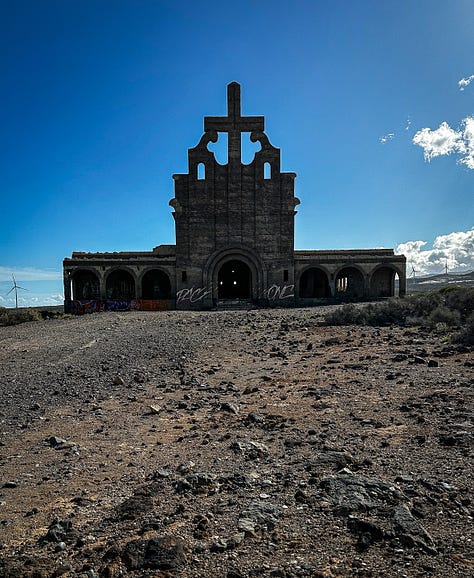
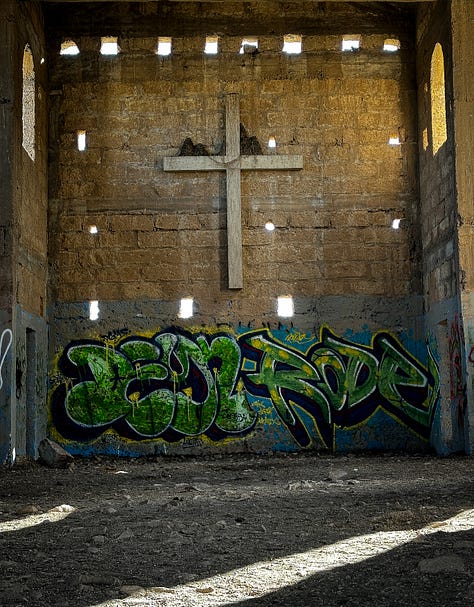
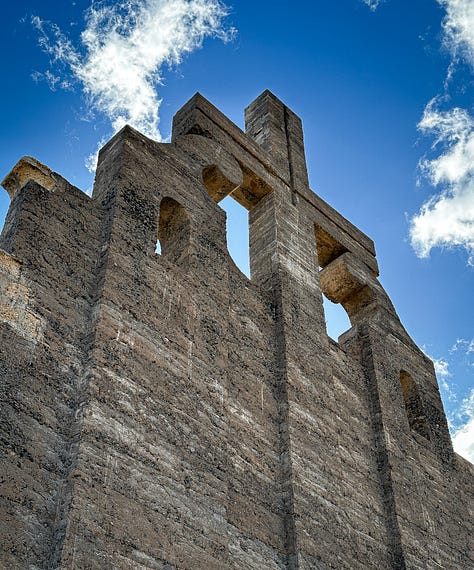
But… science saved the day. 👏👏👏👏
Medical advancements led to the near-eradication of leprosy in the Canary Islands and so the village was never fully completed. (Interestingly, it was developed in the wrong orientation which meant the winds spread the contagion instead of diminishing it… duh. 🤦♀️) Later it was used as a military training facility before being sold in 2002 to an Italian who rents the property for films and commercial production.
As I walked through the buildings, I imagined the graffiti artists creating their work on such a unique canvas. Their talent is pretty impressive.
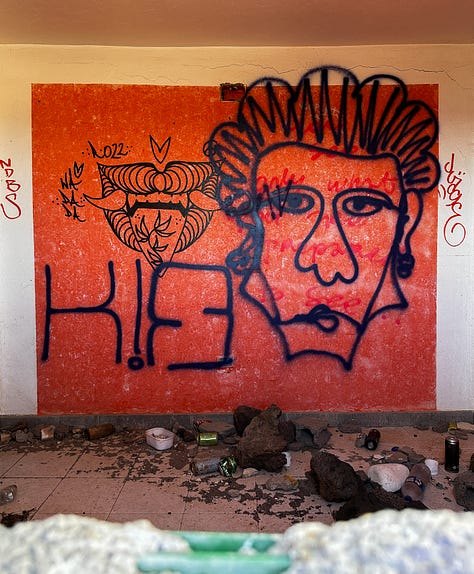
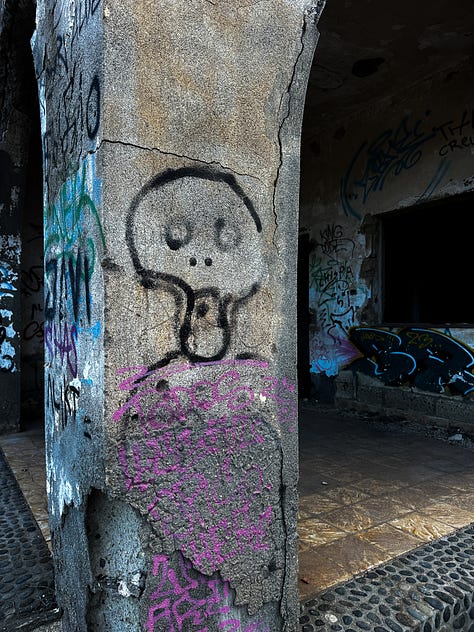
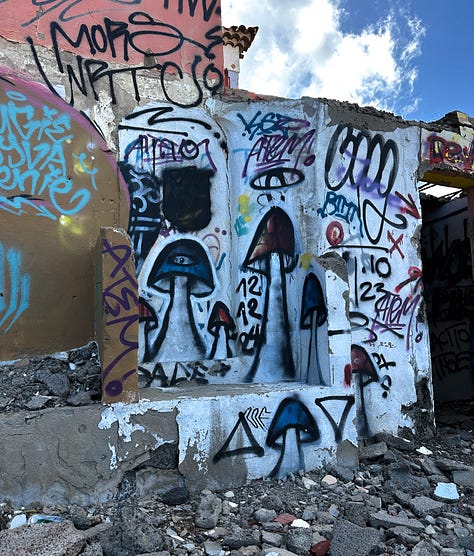
I wondered what this place might have been like if a cure hadn’t been discovered… with sick people wandering, hoping, waiting to die? But today, the vibe is determined by the partiers and artists who have claimed the buildings as their personal art gallery.
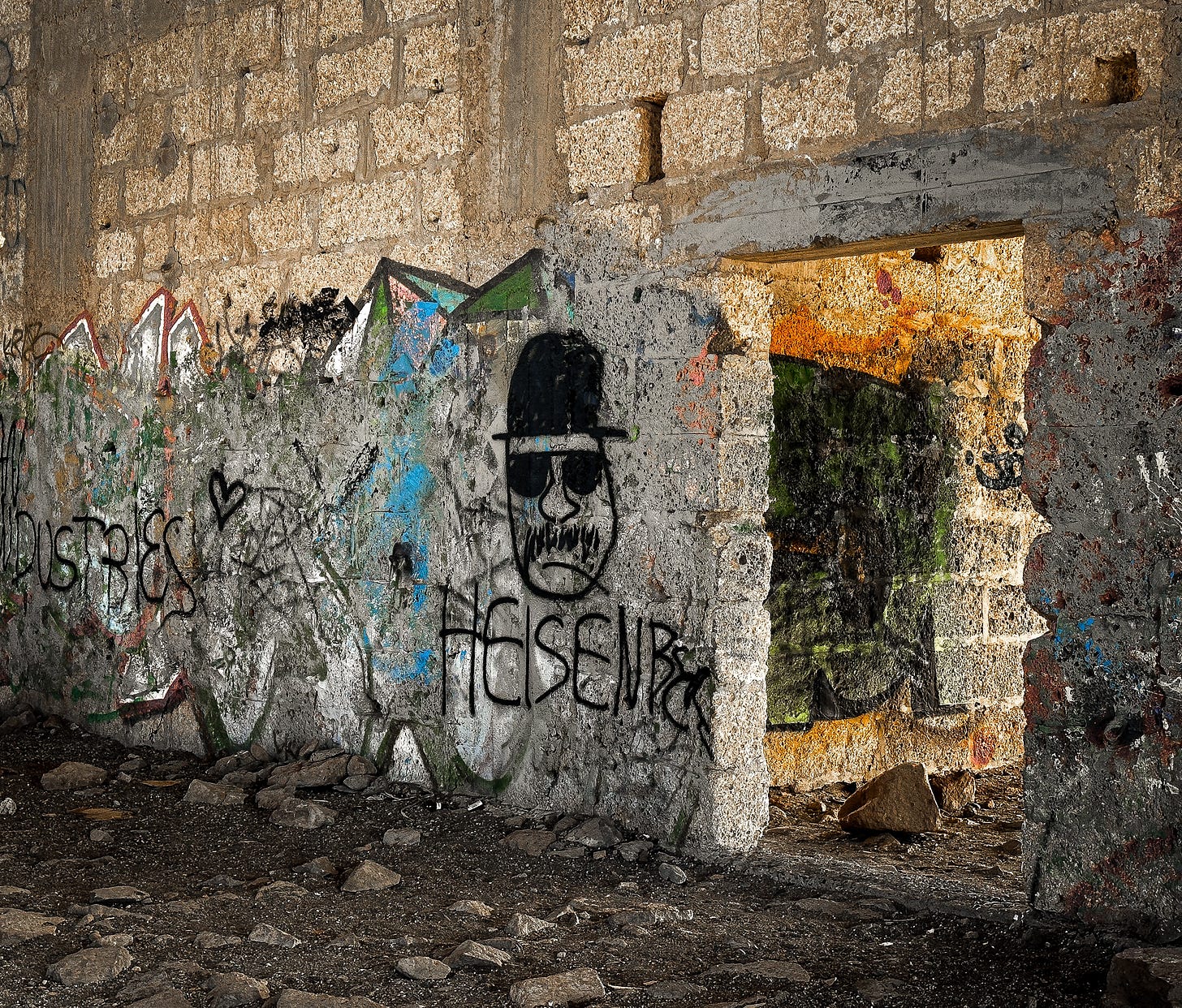
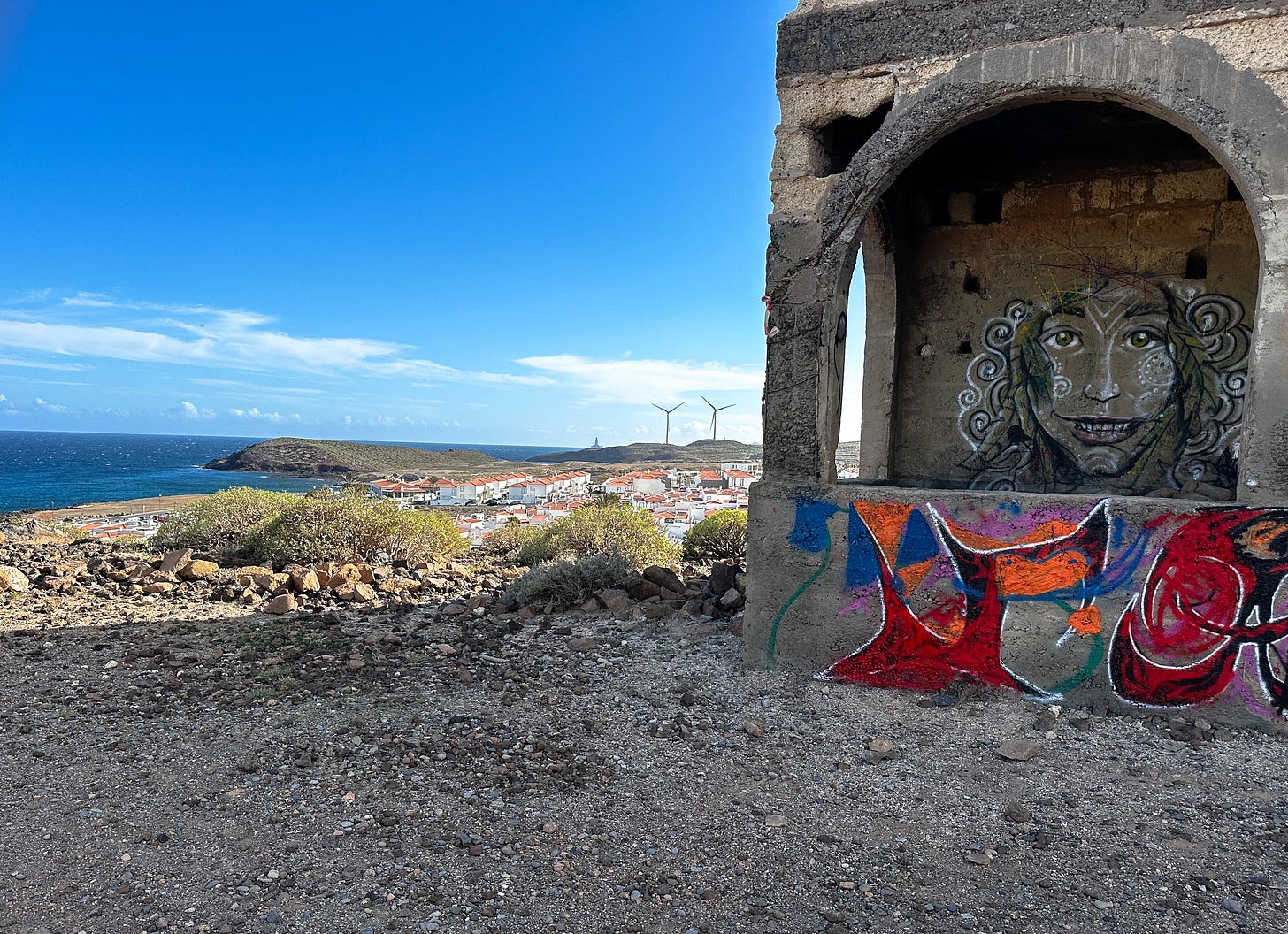
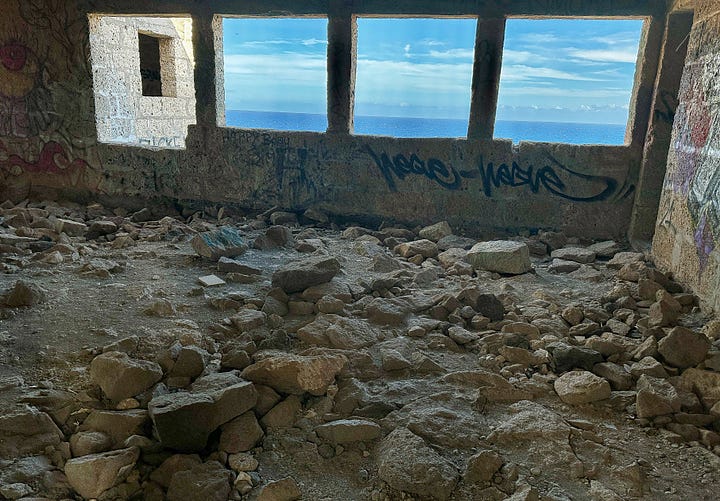
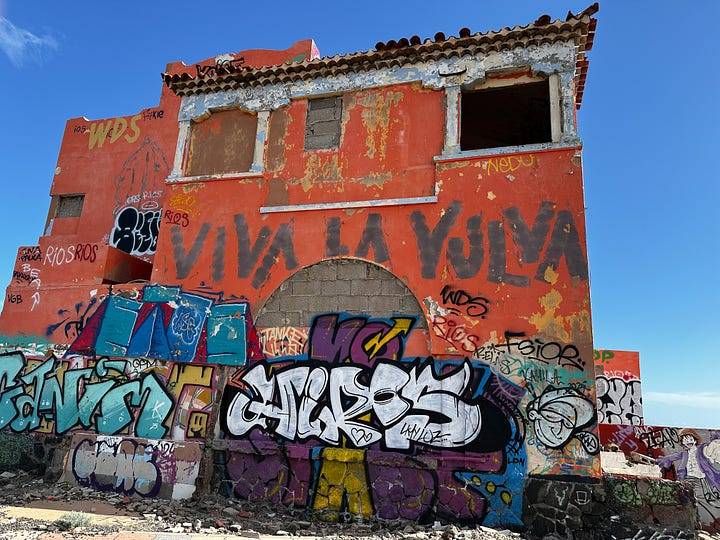
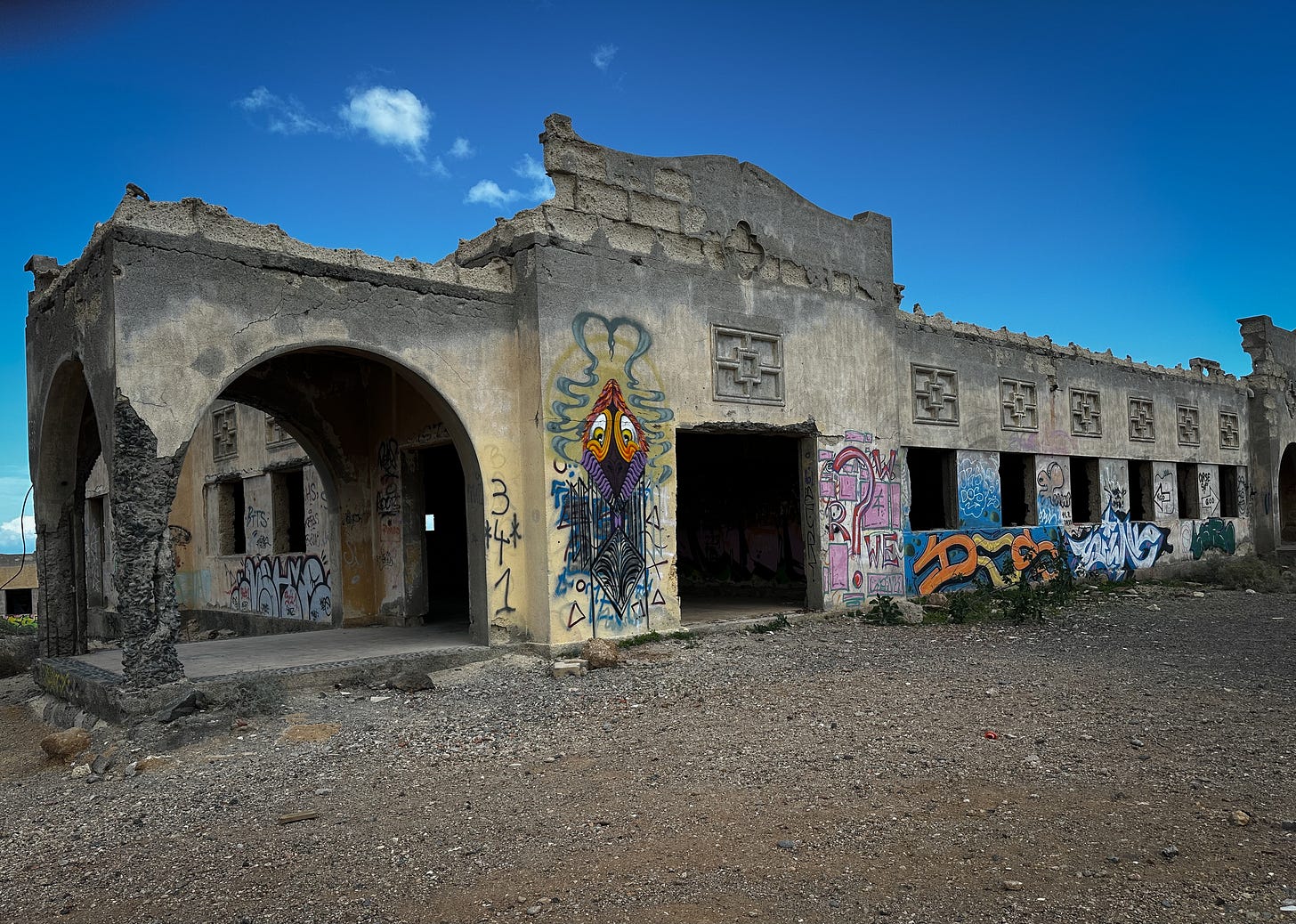
What started as a well-intentioned place to care for the sick has become a destination for imagination. The graffiti has given it a new life, a place by the sea that never housed a patient but lives on as a piece of history, its purpose cut short by medical discovery.
At the beginning of this essay, I said, THIS is what we travel. Go where and while you can. Life is too damned short and there is much to see and learn.
Thanks for being here. Love you guys!
My digital family means the world to me! 💙✌️












Wow what an adventure you had. Some of your photos remind me of my visits to the island of Molokai in Hawaii where a leper colony (Kalaupapa) was created in 1865 before antibiotics were available. The story behind it is tragic. It is now a historical park.
My visits there and subsequent research taught me that leprosy is not an airborne disease. In fact, according to the WHO, “The disease is transmitted through droplets from the nose and mouth of an untreated case of leprosy, containing the causative agent, following prolonged, close contact. The disease does not spread through casual contact (like shaking hands or hugging, sharing meals or sitting next to each other).”
I think you’d really enjoy a visit though a permit is required.
This will give you an idea: https://www.youtube.com/watch?v=7WzAxXMDc6A
As always your photography is amazing Susan! I can absolutely see why you are so excited to get back there I would be too! It always amazing to tour old historical sites especially this one and hooray 🎉 for science!!